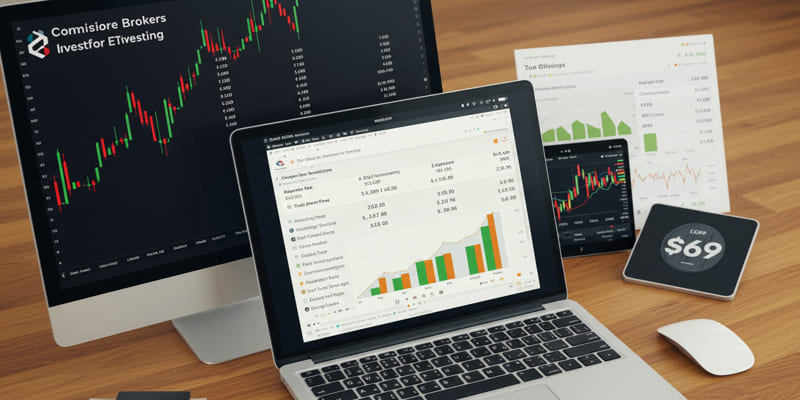Advertisement
Balanced funds are drawing attention for their ability to weather market volatility. That said, if you're also looking for a solid, risk-managed investment, balanced funds could be the right choice for you. But how do you choose the best ones in today's market? With so many options out there, finding a fund that aligns with your financial goals, risk tolerance, and time horizon requires careful consideration.

In this article, we’ll explore what makes balanced funds stand out, guide you through the factors to consider when picking one and highlight the best balanced funds to pick right now.
Balanced funds are meant to establish a fair balance between the risks and returns through their investments in equities or stocks and fixed-income sources such as bonds. By blending equities and bonds, these funds offer potential opportunities to capture the growth momentum of equity markets while diversifying risk by hedging with fixed-income investments, which tend to be much more stable. These might appeal most to conservative investors who would want to take in equities but avoid direct exposure to the volatility thereof.
Balanced funds attract investors due to their diversified approach to investing, which tends to dissipate risk over various classes of assets. The stable bond aspect works as a cushion against market downturns in uncertainty, whereas equity capitalizes on market recoveries. Such a unique balance makes them the go-to for investors seeking a middle ground between aggressive stock investments and risk-averse bonds.

As stated earlier, balanced funds combine stocks and bonds, but every fund has a different strategy for the allocation. The more stock a fund contains, the more it can grow; however, its volatility increases as well. Conversely, funds that have more bonds offer stability but may not give much opportunity to achieve significant returns. One should make sure the allocation of the fund matches their risk tolerance.
While past performance isn’t always indicative of future results, looking at how a balanced fund has performed during various market conditions can give you a good sense of how it may perform in the future. A fund that has consistently weathered market downturns well and provided solid returns in the long term may be a reliable choice.
Every fund charges fees, but some are more expensive than others. When evaluating balanced funds, take a close look at the expense ratio. Lower fees can significantly impact your returns over time, especially with long-term investments. Aim for funds with reasonable fees, especially if they have shown consistent performance.
The expertise of the fund manager can also make a difference in the success of a balanced fund. A skilled manager can navigate market changes and adjust the fund’s allocation to meet the current economic climate, optimizing returns.

One of the oldest and most well-known balanced funds, the Vanguard Wellington Fund has a 60/40 mix of stocks and bonds. The fund’s long-term track record of steady growth and low expense ratio makes it a solid choice for conservative investors. With a focus on dividend-paying stocks and high-quality bonds, it’s a go-to for those seeking a balanced approach with reliable returns.
With a similar allocation to the Vanguard Wellington Fund, the Fidelity Balanced Fund invests primarily in large-cap stocks and investment-grade bonds. The fund’s performance has been impressive, particularly during market downturns, making it a strong contender for those looking for stability. It also benefits from Fidelity’s strong research team and low fees.
This fund offers a slightly more aggressive allocation, with around 70% in equities and 30% in fixed income. The T. Rowe Price Balanced Fund has a history of strong returns, particularly in bull markets, making it an excellent choice for those who want to capture more growth potential while still maintaining some bond stability.
For investors seeking global diversification, the BlackRock Global Allocation Fund is an attractive option. With exposure to both U.S. and international stocks and bonds, this fund offers a more diversified approach compared to U.S.-only balanced funds. The allocation mix can shift based on the global economic outlook, which adds a level of flexibility for investors looking to optimize their portfolios.
This fund blends U.S. stocks with fixed-income investments, aiming to provide steady income and long-term growth. The American Funds American Balanced Fund has a reputation for consistency and has been a popular choice for conservative investors. The fund is managed by a team of seasoned professionals who focus on finding undervalued stocks and high-quality bonds, making it a solid pick for both growth and stability.
With a 60/40 stock-to-bond allocation, the MFS Total Return Fund seeks to balance income and capital appreciation. Due to its diversified approach, the fund has a strong history of performance, even in volatile markets. Its active management strategy focuses on picking stocks with strong growth potential while ensuring a stable bond allocation to manage risk.
If you’re looking for a way to invest that offers both stability and growth potential, balanced funds are worth considering. Right now, in a market that’s unpredictable and often volatile, they provide a good balance between risk and reward. By combining stocks and bonds, balanced funds help mitigate risk, offering diversification that can help protect your investments during market downturns. Whether you’re a seasoned investor or just getting started, choosing the right balanced fund is a key part of creating a well-rounded portfolio.
Advertisement

By Georgia Vincent/Jan 13, 2025

By Martina Wlison/Jan 15, 2025

By Georgia Vincent/Dec 27, 2024

By Elena Davis/Oct 21, 2024

By Darnell Malan/Apr 02, 2025

By Vicky Louisa/Nov 05, 2024

By Isabella Moss/Oct 18, 2024

By Darnell Malan/Dec 11, 2024

By Maurice Oliver/Jan 15, 2025

By Verna Wesley/Dec 21, 2024

By Isabella Moss/Jan 15, 2025

By Celia Kreitner/Oct 20, 2024